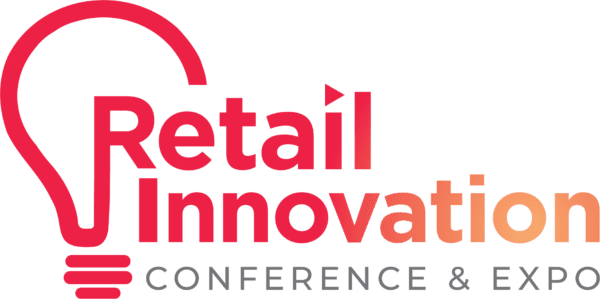Within the workplace, across all industries, psychological safety for everyone within the organization is critical. Today’s workplace landscape is highly competitive, especially when trying to entice top talent to consider opportunities within your business.
To remain competitive, ensure strong engagement. And to optimize employee wellness, companies must not only create a safe space for all employees but also ensure it is ingrained in their company culture. When employees feel psychologically safe, their performance and job satisfaction improve.
Here, we explore the importance of psychological safety in the workplace and how employers can weave this crucial aspect into their organizations’ day-to-day operations and the overall workplace culture they cultivate.
A Competitive Advantage
Attracting top talent in an incredibly competitive job market and work landscape can be difficult. Companies that hope to attract the best employees will make their benefits and policies as attractive as possible. Focusing on the psychological safety of employees can give employers a competitive edge. A recent study shows that 93% of business leaders believe that psychological safety boosts the bottom line, creating more productivity, loyalty and employee well-being.
When employees feel safe and acknowledged at work, they are more likely to authentically engage with others in the workplace. The comfort level in the organization improves, and stress and fatigue decline. Workplaces that are fear-based, even unconsciously, require more effort and energy on the part of employees. The internal resources spent worrying if you are saying something wrong, not feeling included or being afraid to speak up is time and focus lost. Employees who feel psychologically safe can contribute at higher levels, both in terms of productivity and creativity, and will be less likely to seek employment elsewhere.
It’s beneficial for companies to incorporate psychological safety into their policies, procedures and culture, especially if they aim to remain competitive within their industry.
Psychological Safety = High-Performance Teams and Better Outcomes
Psychological safety emerged as the highest deciding factor when several high-performance teams were studied. The study revealed that high-performance teams that foster a sense of psychological safety are more likely to acknowledge and learn from mistakes, welcome diverse perspectives and generate innovative ideas. Everything that organizations look for in competitive teams can come from opening the door for policies that embrace psychological safety.
People who feel that work is a safe space are also more likely to take risks with their work, leading to bigger ideas and further innovation. When combined with the job satisfaction and productivity that comes with psychological safety, it’s easy to see how prioritizing this critical benefit can help employees be themselves and realize their full potential.
How Leaders can Help Cultivate Psychological Safety
Leaders play a strong role in creating a psychologically safe environment.
First, leaders model optimal behavior. It’s important for them to promote inclusion and help team members feel a part of the group. When they are welcoming and encourage open communication, for example, it allows coworkers to feel more comfortable sharing their thoughts and perspectives, even when they might differ.
Psychologically safe environments are ones that promote learning and growth. Leaders should acknowledge the mistakes they make so others feel open in sharing their challenges. A learning culture makes it easy to ask questions and encourages curiosity over having all the answers. Leaders benefit from inviting dissenting points of view, protecting and encouraging those who challenge, and actively supporting discussions that lead to innovation.
Tactically, leaders can host regular one-on-ones with team members, practicing active listening and bringing transparency to the table about policies and changes.
It’s also important to recognize the good work of employees, especially those who feel safe enough to take calculated risks. When employees can see (or even feel) that their risks are being rewarded, they are more likely to push the envelope and pursue innovation. It’s essential to recognize risk-taking, even if the risk didn’t work out, so employees feel safe to continue to try.
Leaders are the ones who keep psychologically safe environments working. Minimizing fear-based behaviors, such as threats or punishments, allows for safety. With strong mentorship and robust support, leaders can inspire others on the team to follow suit and create a workplace where innovation can thrive.
Policies and Procedures that Inspire Psychological Safety
All psychologically safe work environments are built around strong policies and procedures. Psychological safety must be prioritized when building goals and workplace culture. The importance and benefits of safety should be openly discussed with stakeholders and built into every policy and practice.
Then, leaders need to establish procedures for handling risk failures, challenging questions or crises in the workplace. Mistakes should be treated not as emergencies but as learning opportunities that can ultimately benefit the organization’s growth. Too often, leaders hold the false belief that accountability and learning cannot go hand in hand. In reality, learning environments promote higher levels of accountability by providing safety to push limits.
Psychological safety also requires inclusivity. All employees should feel seen, accepted and heard as their authentic selves to feel truly safe. Leaders at all levels should observe behaviors and provide feedback when inclusivity is at risk.
Finally, leaders need not rest on initial policies and procedures. Instead, they must be prepared to continually reassess and not be afraid to make changes to policies and procedures that fail to cultivate psychological safety.
For modern workplaces, psychological safety is not just a nice-to-have perk but a significant benefit that can help both individual employees and the entire organization thrive. To unlock the full potential of any team in any industry, psychological safety should be seen as a must-have for any organizational culture.
As seen in Fast Company, Business Insider, and BuiltIn, Dr. Laurie Cure, Ph.D., a leading voice in emotions, fear and psychological safety, serves as the CEO of Innovative Connections. With a focus on consulting in strategic planning, organizational development, talent management and leadership, Dr. Cure’s expertise in change management and culture evolution empowers her clients to achieve organizational success by enabling them to discover and release their human potential.




